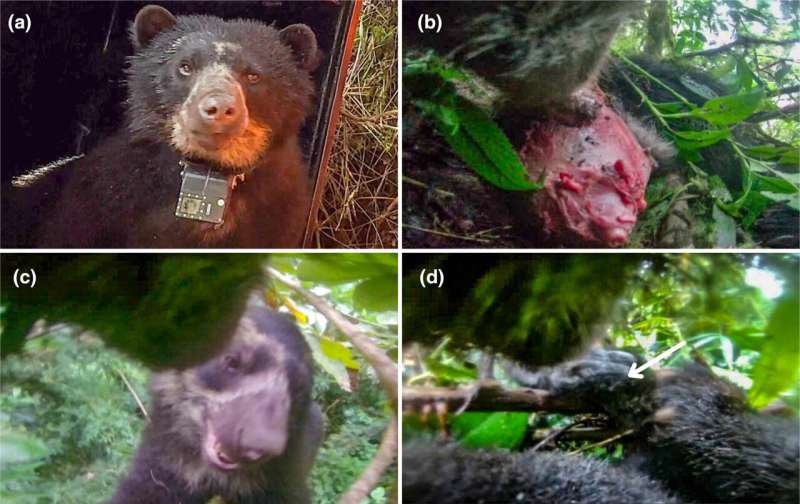December 5, 2024 report
This article has been reviewed according to Science X's editorial process and policies. Editors have highlighted the following attributes while ensuring the content's credibility:
fact-checked
peer-reviewed publication
trusted source
proofread
Four months of camera collar footage provide unprecedented insights into the lives of threatened Andean bears

A team of wildlife ecologists at Asociación para la Conservación de la Cuenca Amazónica, in Peru, working with a colleague from the Osa Conservation, in the U.S., has recorded four months of previously undocumented natural behaviors of Andean bears. In their study published in the journal Ecology and Evolution, the group attached a camera to a bear they named Chris.
The recordings were part of a project aimed at learning more about Andean bears, which, as their name suggests, inhabit the mountains of South America, mainly the Andes. Prior research has shown that they are well-suited to living both on the ground and in the treetops.
They have large back leg muscles and sharp, curved claws that help with climbing. They are also known to build large platforms in the treetops, where they take food they have found, where they sleep—and apparently, where they go to mate.
Up until now, all bear matings observed by humans have been conducted on the ground. In this new study, the research team recorded a pair of Andean bears mating multiple times in a platform Chris built high up in the trees.
The mating observed by the researchers was part of thousands of hours of video recorded by a camera embedded in a collar the team had affixed to the bear's neck. In addition to mating, they also observed other activities not seen before, such as eating stinging nettles.
Chris was also observed eating a woolly monkey and later a baby bear, marking the first recorded instance of infanticide in Andean bears. The researchers suggest it may have been a case of a male bear eating the young of a female bear as a means to induce her to go into heat.
At one point, the research team was surprised to find a female bear appear on the scene. Chris and the female then engaged in what the researchers describe as a courtship, which lasted approximately one week. During that time, they socialized, ate together, slept together and mated multiple times—all in their treetop platform.
More information: Ruthmery Pillco Huarcaya et al, Through the eyes of the Andean bear: Camera collar insights into the life of a threatened South American Ursid, Ecology and Evolution (2024). DOI: 10.1002/ece3.70304
Journal information: Ecology and Evolution
© 2024 Science X Network






















